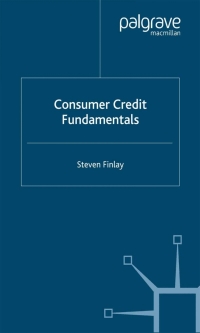Question
When the Federal Reserve Bank introduced its Quantitative Easing (QE) program shortly after the financial crisis, it intervened in long term bond markets with the
When the Federal Reserve Bank introduced its Quantitative Easing (QE) program shortly after the financial crisis, it intervened in long term bond markets with the objective of reducing long term interest rates (e.g., mortgage borrowing costs). Lets take the perspective of a homeowner who currently has a $300,000 mortgage balance, 20 years remaining on the life of the loan and a fixed interest rate of 5.84% annualized percentage rate (APR), monthly compounded. Suppose that, following the QE bond purchases, the borrower has the option to refinance the loan at a fixed interest rate of 4.5% annualized percentage rate (APR), monthly compounded. Both loans have monthly payments.
1)Suppose that the household replaces the old loan with a new one, with the same principal and maturity, but at the lower 4.5% monthly compounded APR. (In other words, the homeowner borrows the $300k from a new bank and uses it to pay back the original loan with the old bank.) Compute the monthly interest rate on the old and new loans, respectively, and the change in the monthly payment which the borrower would enjoy after refinancing the loan. Please round the interest rate to at least three significant digits.
2)Suppose that the household is comfortable with her ability to make the existing payments and instead chooses to extract equity from her home, which provides a source of cash that is potentially available for other purchases, such as a new car. As such, she decides to do a cash-out refinance, in which she prepays her existing loan and replaces it with a new one with the same maturity but with a different amount of principal, a 4.5% monthly compounded APR, and the same payment as the original loan. (In other words, the homeowner borrows an amount greater than $300k from a new bank and uses $300k to pay back the original loan with the old bank and keeps the remainder as cash that is available for other purchases.) You may assume that the value of the house is high enough that the bank will be willing to let her take out a larger mortgage if desired. How much equity is she able to extract (i.e., what is the difference between the amount borrowed on the new loan and the balance on the old one) from following this strategy?
Step by Step Solution
There are 3 Steps involved in it
Step: 1

Get Instant Access to Expert-Tailored Solutions
See step-by-step solutions with expert insights and AI powered tools for academic success
Step: 2

Step: 3

Ace Your Homework with AI
Get the answers you need in no time with our AI-driven, step-by-step assistance
Get Started


